Best known for the cragged peaks and groaning glaciers of the majestic Himalayas, Nepal is a dream destination for intrepid hikers and climbers to explore. Yet there’s far more than high altitude trails to tempt the traveler, as the country’s captivating ancient culture and intricate Buddhist stupas can attest. Of course, you have to be able to charge your devices to make the most of your time. So without further ado, here’s everything you need to know about power adapters in Nepal.
US to Nepal Power Adapter: What Plug Do I Need? (2025)
Which power outlets do they use in Nepal?
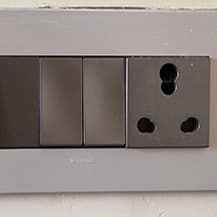
Nepal power outlet
Nepal uses three different power outlet types: Type C (the Euro-style with two round pins), Type D (the Indian Subcontinent style with three round pins), and Type M (similar to D but with slightly larger pins).
The Type D adapter is generally the most commonly needed adapter throughout the country, although Type C and Type M are found with less frequency, sometimes all within the same hotel room!
What kind of power adapter do I need for Nepal?
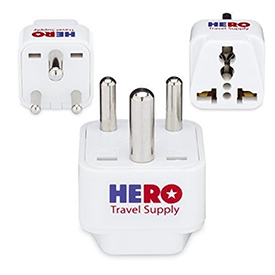
Unlike most countries, in Nepal, you cannot rely on just one adapter because you’ll likely encounter three different power outlet types on your trip. You’ll need three separate adapters to ensure you can charge your electronics everywhere you go.
American travelers will need an adapter that will take their US plugs and convert their shape to Type D, Type C, and Type M. We recommend starting with a Type D Adapter but to be extra safe, also bring a Universal Adapter. This one is compatible in over 100 other countries around the world so you will likely be all set for the next countries you visit.
What’s the electricity and power supply like in Nepal?
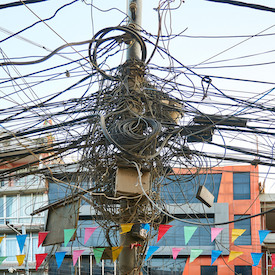
Like much of the world, Nepal power supply runs on 230V and 60 Hz. The US is unique in that it runs on 110V and 50Hz. This means you’ll want to make sure that your devices are dual voltage before plugging them into a Nepalese power outlet. Fortunately most devices these days are dual voltage.
Nepal’s infrastructure is hopelessly underdeveloped, including its electrical system. Blackouts and surges are frequent, while electricity is unavailable during certain hours of the day in some areas.
Do I Need A Voltage Converter in Nepal?
Even though Nepal uses a different voltage and frequency to the US, a voltage converter isn’t necessary for the vast majority of travelers. These days, virtually all personal electronics are dual voltage; thus you can safely use them on either system. The most common exception is the portable hairdryer, which usually runs on a fixed 110V. Always check the manufacturer’s labeling when in doubt.
Other Nepal Packing List Items
In addition to your US to Nepal power adapter, these items will help you pack with intention and expand the possibilities of your getaway. Also, check out our Nepal packing list for more inspiration and ideas.
-
1. Neck Wallet / Passport Pouch
Petty crime is common in this impoverished country, and you’ll be a particularly popular target as a wealthy foreigner. It’s best to store your passport and credit card in a neck wallet to avoid falling victim to pickpockets or bag snatching thieves. These lightweight and comfortable accessories safely stash your valuables under your shirt and out of sight from potential thieves.
![hero neck wallet]()
-
2. Packing Cubes
-
3. Virtual Private Network (VPN)
Cybercriminals have taken to lurking around hotel lobbies and cafes to steal sensitive personal information from other WiFi users. And should they target you, they could obtain your internet banking login details and snatch your entire life savings in a flash.The best way to protect yourself is to invest in a VPN, which encrypts your web traffic to hide it from other users.
![how a vpn works]()
-
4. Lip-Stick Sized Charger
Whether you’re snapping a selfie at the end of the Everest Base Camp Trek or searching for the best curry house in downtown Kathmandu, a fully charged cell phone is essential on any trip to Nepal. And the best way to maintain a healthy battery level is to invest in an ultra-portable lipstick-sized charger.
![Lipstick-Sized Charger]()
-
5. Windproof Travel Umbrella
During the months of June through September, rain is prevalent throughout Nepal. Depending on what areas you visit, there’s a good chance you could encounter rain during other months as well. To be prepared, we recommend bringing an umbrella like the one pictured. Its compact, reliable design, along with some nifty features, makes it an easy addition to your daypack.
![travel umbrella]()
-
6. Jet lag Relief Pills
There’s no quick and easy way to get to Nepal. On the contrary, all flights from the US require a layover and a total travel time of 18 hours or more. Factor in a time difference of 10 hours or so, and you’re guaranteed to suffer from the ill effects of jet lag on arrival. Thankfully, you can at least mitigate the effects by taking the prescribed dose of jet lag relief pills.
![Jet Lag Relief]()
-
7. Travel Insurance for Nepal
What would happen if you suffered a severe case of altitude sickness at a high pass on the Annapurna circuit?
If you had travel insurance, you could quickly arrange a medical evacuation and immediate treatment. If not, you’d be putting your life at serious risk. Don’t take the chance. Invest in a travel insurance policy that covers high-altitude trekking, and any other unforeseen issues, to safeguard your trip. We like to use TravelInsurance.com to compare plans from top companies to find the best one for our family and travel plans.![Travel Insurance for Nepal]()
Other FAQs about traveling in Nepal
-
1. When to Travel to Nepal?
Nepal experiences four distinct seasons:
Summer (June to August) is the monsoon season, which means higher temperatures and a relentless amount of rain. Although hiking is still possible, muddy trails and daily rainfall make it an unpleasant experience that most trekkers prefer to avoid. The showers only tend to last an hour or two, however, meaning the country is still open for business for those who don’t intend to hike.Fall (September to November) is Nepal’s peak trekking season, which mostly entails clear blue skies and a distinct lack of rain. You’ll have to share the mountains with loads of other tourists, however, and airfares and hotel rates will increase.
The winter (December to February) sees heavy snowfall close the high altitude trails, thus rendering the best trekking off-limits. Nevertheless, you can still enjoy a few low-altitude routes, and the rest of the country is fine to visit. Spring (March to April) is another excellent time to trek as the weather is balmy and the vegetation is in full bloom. Note that the climate does tend to be a little more unpredictable than in Fall. Be sure to check current Nepal travel advisories before you go.
-
2. What is the weather like in Nepal
In addition to the seasons, the altitude also heavily influences the climate in Nepal. The mountains and the highlands are known for warm sunny days and frigid nights, especially in winter. The lower-lying regions, on the other hand, feature a warm tropical climate with high levels of humidity.
-
3. What is there to do in Kathmandu
Frantic and chaotic yet utterly entrancing, the historic city of Kathmandu lays on the charm despite its third-world pitfalls. And even though a 2015 earthquake leveled large swathes of the city, the ancient wonders that remain make Kathmandu a must-visit for any history buff. Most make a beeline for Durban Square, Nepal’s religious and historic epicenter where sadhu holy men rub shoulders with foreigners amid exotic millennia-old sites.
Beyond the square, a labyrinth of alleyways comprises the city’s enchanting old town. Wander around on foot to marvel at the ancient Hindu temples and Buddhist stupas that pop up at every turn, being sure not to miss the highlights such as the Seto Machhendranath Temple, the Thahiti Tole, and the Kathesimbhu Stupa. Be sure to spend a few minutes absorbing the action at Ason Tole, the city’s most bustling junction which is traversed by a dizzying display of people every day.
To the west of the old town, Swayambhunath is Nepal’s most famous stupa – watch out for the marauding monkeys en route. And to the east, the Hindu Pashupatinath Temple provides a grizzly glimpse of human mortality as families cremate their deceased on the Bagmati River. Nearby, the Boudhanath Stupa is the country’s largest, which is particularly enchanting during prayer times at sunrise or sunset.
-
4. Where should you go in Nepal?
To marvel at awe-inspiring ancient wonders without the congestion of Kathmandu, make your way to the nearby villages of Patan and Bhaktapur. Each has its own temple-strewn Durbar Square that rivals the magic of the capital. Wildlife lovers should make their way downhill to the steamy lowlands of the Chitwan National Park. Throughout these lush grasslands live exotic fauna such as leopards, rhinos, sloths, and the elusive Bengal tiger, not to mention an array of colorful birdlife.
Budding Buddhists would be mad to miss Lumbini, the birthplace of Lord Buddha and the site of several ornate temples funded by devout donors from around the world. Knock the adrenaline levels up a notch with a visit to the adventure sports capital of Pokhara. Despite being endearingly chill, this picturesque lakeside resort boasts ample opportunity to indulge in death-defying pursuits such as parasailing or white-water rafting. Of course, you could kick back and relax with the hippy community instead.
Last but certainly not least, Nepal is a trekking mecca that’s famed for boasting the best mountain trails in the world. High altitude trekking opportunities abound, with some of the most famous multi-day treks including the Annapurna Circuit, the Everest Base Camp, and the Manaslu Circuit, to name a few.
-
5. How’s the best way to get around in Nepal
Nepal’s underdeveloped infrastructure makes overland transport a chore, which is why many travelers prefer to take to the skies instead. National carrier Nepal Airlines has the most services, although competitors such as Buddha Air, Yeti Airlines, and Simrik Airlines sometimes offer cheaper rates. Regardless of who you choose, cancellations and delays are common due to the unpredictable high-altitude climate.
The bus is the other major means of transport, though be aware that vehicles are often run down and journey times can be excruciatingly long. Opt for a modern tourist bus on an express service to minimize discomfort.
Private minivans or jeeps save a significant amount of time and are particularly cost-effective for those traveling in a group. Within the towns and cities, taxis and rickshaws are the best way of getting from A to B. Always haggle for a fair price before jumping in.




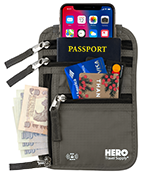



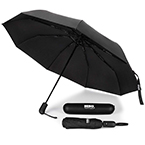
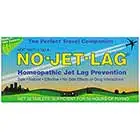

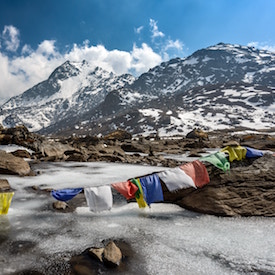 Nepal experiences four distinct seasons:
Nepal experiences four distinct seasons: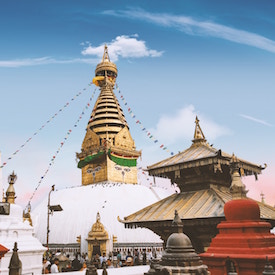 Frantic and chaotic yet utterly entrancing, the historic city of Kathmandu lays on the charm despite its third-world pitfalls. And even though a 2015 earthquake leveled large swathes of the city, the ancient wonders that remain make Kathmandu a must-visit for any history buff. Most make a beeline for Durban Square, Nepal’s religious and historic epicenter where sadhu holy men rub shoulders with foreigners amid exotic millennia-old sites.
Frantic and chaotic yet utterly entrancing, the historic city of Kathmandu lays on the charm despite its third-world pitfalls. And even though a 2015 earthquake leveled large swathes of the city, the ancient wonders that remain make Kathmandu a must-visit for any history buff. Most make a beeline for Durban Square, Nepal’s religious and historic epicenter where sadhu holy men rub shoulders with foreigners amid exotic millennia-old sites.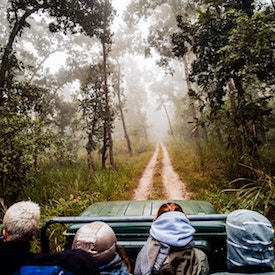 To marvel at awe-inspiring ancient wonders without the congestion of Kathmandu, make your way to the nearby villages of Patan and Bhaktapur. Each has its own temple-strewn Durbar Square that rivals the magic of the capital. Wildlife lovers should make their way downhill to the steamy lowlands of the Chitwan National Park. Throughout these lush grasslands live exotic fauna such as leopards, rhinos, sloths, and the elusive Bengal tiger, not to mention an array of colorful birdlife.
To marvel at awe-inspiring ancient wonders without the congestion of Kathmandu, make your way to the nearby villages of Patan and Bhaktapur. Each has its own temple-strewn Durbar Square that rivals the magic of the capital. Wildlife lovers should make their way downhill to the steamy lowlands of the Chitwan National Park. Throughout these lush grasslands live exotic fauna such as leopards, rhinos, sloths, and the elusive Bengal tiger, not to mention an array of colorful birdlife.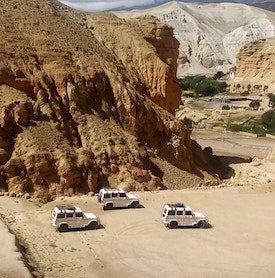 Nepal’s underdeveloped infrastructure makes overland transport a chore, which is why many travelers prefer to take to the skies instead. National carrier Nepal Airlines has the most services, although competitors such as Buddha Air, Yeti Airlines, and Simrik Airlines sometimes offer cheaper rates. Regardless of who you choose, cancellations and delays are common due to the unpredictable high-altitude climate.
Nepal’s underdeveloped infrastructure makes overland transport a chore, which is why many travelers prefer to take to the skies instead. National carrier Nepal Airlines has the most services, although competitors such as Buddha Air, Yeti Airlines, and Simrik Airlines sometimes offer cheaper rates. Regardless of who you choose, cancellations and delays are common due to the unpredictable high-altitude climate.